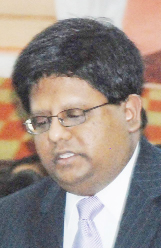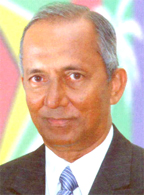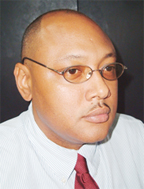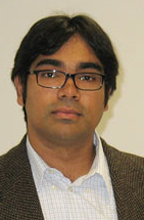The Millennium Development Goals (MDGs) represent a global partnership to reduce extreme poverty by setting out a series of time-bound targets, with a deadline of 2015. In 2000, world leaders made a historic commitment: at the United Nations Headquarters in New York to eradicate extreme poverty and improve the health and welfare of the world’s poorest people within 15 years. The commitment, adopted at the Millennium Summit in September 2000, was described in the United Nations Millennium Declaration. It was expressed in eight time-bound goals, known as the Millennium Development Goals (MDGs). As part of a continuing series to assess where Guyana is in terms of the targets outlined, Stabroek News today looks at progress on goal 1: eliminating extreme poverty.
In 2001, government introduced the Poverty Reduction Strategy Paper (PRSP) which outlined a programme of reforms to re-orient the country’s economic and social policies towards poverty reduction and the achievement of the MDGs, but while there has been movement in some areas progress has been seen as marginal.
There has been no significant reduction in moderate and extreme poverty levels countrywide since 2001; currently moderate poverty is estimated to be around 36 percent and extreme poverty is estimated at around 19 percent.

The PRSP rested on seven pillars: broad-based, jobs generating economic growth; environmental protection; better governance; investment in human capital; investment in physical capital; improved safety nets; and special intervention programmes to address regional pockets of poverty.
But while government hailed it as a good guide to poverty reduction, monitoring of its results has been poor save for two progress reports in 2003 and 2005. Observers have also pointed to the need for the establishment of a framework for effective monitoring and evaluation of PRSP implementation, including broad public participation, and improvements in statistical measurement of outputs and outcomes.

The late PNCR MP Winston Murray along with AFC MP Raphael Trotman and economist and AFC member Dr. Tarron Khemraj described the PRSP as a poor guide to poverty reduction and lacking in emphasis on economic development at its foundation. “The PRSP is a palliative strategy that relies extensively on petty projects and financing from the [Inter-American Development Bank, World Bank and International Monetary Fund,” Khemraj has said.
Trotman said poverty is easy to spot in the country but that in some regards it is subtle. He argued that poverty reduction has been stagnated, noting that while there is greater flow of money the sources are unknown. “…It cannot be from normal commerce,” he said.
Murray, who spoke with Stabroek News the day before he fell ill, said real income has not grown for several years. He said government usually points to how “large” the annual budgets are and would quote figures but according to him this says nothing about what improvements are being made in the various sectors and more importantly what impact the targeted programmes are having. “The fact that they are spending money says nothing unless they also tell us by how much they hope to reduce unemployment figures, how much additional jobs spending this money will yield in a given year and by how much are they going to bring down child mortality rates,” Murray said.
Not a stand-
alone strategy
Questioned as to what happened to the PRSP, Finance Minister Dr. Ashni Singh said that it was not a stand-alone strategy but “an aggregation of sector-strategy.” He explained: “What the PRSP said we will do in education is not separate from our national education plan. What it said we will do in health is also not separate from our national health strategy…in fact the PRSP could not substitute for those documents.”
Singh said firmly that every objective outlined in the PRSP has proceeded in terms of implementation through various sectoral initiatives and strategies. He said of the PRSP: “It is a statistical fact that we have continued to reduce poverty even if it was at a pace somewhat more moderate [than] in the first six or seven years…even if at a rate that is not quite as rapid as the first period.” He also emphasized that progress in terms of implementing developmental programmes needs to be considered in the context of external realities and he cited global challenges, changing dynamism as it relates to trade, fuel and energy problems, among other issues.

But Murray argued that while government has been spending, people have not seen any qualitative difference in their lives. He decried the tax system, saying it has become burdensome on people. “People’s salaries have hardly grown by much,” he added, while noting that nothing has been done for quite a few years in terms of lifting the threshold for income tax purposes.
Murray contended that a high tax rate and no reduction in the threshold translates into “suffering” for many Guyanese, particularly public servants, who he said have been fed marginal increases within the past few years. Moreover, he described the unemployment situation in the country as appalling, saying that it is estimated to be around 15 percent or “probably higher.”
However, Singh said that poverty has been declining as evident in the comparison from figures in 1993 to 2006. In recent years, he said there has been a steady decline in poverty, adding that there are a number of key findings which demonstrate that there has been progress. According to him, government has made gains in reducing poverty and improving access to social services in all the communities in Guyana “from urban to rural to hinterland.”
Underperformance
Defining poverty as not just the absence of food, but limited access to justice, education and security, Trotman said that Guyana continues to underperform. He said government has done well with infrastructure, but that the provision of services has been dismal. “It is easy moving around Georgetown and seeing the latest model car and the high-rise building to believe that Guyana’s economy is booming, but we need to assess what is happening in villages [and] small communities outside of the city where drugs and other social ills are undermining any gains made,” he said. “Is the average Guyanese earning more? And if they are, then have their lives improved? Are we accessing better services? I think the answer is no.”

Trotman said also that while some of the systems are in place, they are not working.
Singh has argued that the PRSP strategies have translated into the national budget allocation and mobilizing of resources. “Almost literally, everything we do at the government level… is in constant recognition of the needs for us to make progress towards achieving these goals,” he said.
Singh said that the MDGs permeate every policy document that is made because the goals are at the core of the state of human wellbeing in the country. “When we speak of a national competitiveness strategy that aims at increasing the competitiveness of the business environment…to the extent that it attracts investment, creates jobs and increases production and productivity in the country, it is a strategy aimed at helping us achieve our MDGs.”
Trotman contended that much of the data submitted by government is suspect, adding that the donor agencies offer more reliable statistics on progress in the country. He said that countrywide consultations are needed on poverty reduction implementation because “the public has a right to know.” “…I am not going to say there are not real stories of people who moved from poverty and into a better life but… how many of these do we have?” Trotman asked.
Further, he said that there is “severe poverty” in some hinterland areas, extreme injustice and higher uses of narcotics and movement of illicit drugs.
Singh was questioned about poverty in the hinterland, where studies have shown that the rate of is as high as 77 percent in some communities. He, however, argued that the MDG indicators were defined in a way for urbanized areas. “Existence in rural areas does not largely revolve around commercial transactions and a lot of food is from subsistence production, and they do not quantify how much dollars they live on each day,” he noted. He said too that it depends on if you define poverty by the number of rooms in the dwelling home, access to sewage disposal systems, and access to piped water.
While he said that by definition hinterland areas would be considered poor, Singh stressed that government has expressed grave concerns about the interpretation of poverty in the hinterland since “it depends on what you’re observing.” He added that an informed approach needs to be adapted with respect to the poverty indicators.
Murray said that in every sector or sub-sector, including education, health, poverty reduction, economic development and income levels, the hinterland regions trail the coast. “I don’t know that any minister would deny this,” he noted.
Solutions
Khemraj, in an analysis of the PRSP, criticised it as having no long-term vision that will transform the economy.
He said that it focuses on piecemeal policies that would just keep people above the poverty line rather than focusing on the creation of wealth through sustained work, noting that in the long-term poverty is eliminated when people can have sustained work paying good wages.
Singh argued that progress on many of the indicators requires a substantial allocation of resources in certain areas and according to him the finite nature of the resources translate into a development challenge. “It is for this reason going forward that we are focused on growing the economy rapidly…the [Low Carbon Development Strategy] also advocates for resources to be used in a development context,” he said. He said too that an extremely volatile external environment has resulted in challenges at home.
Additionally, Singh said that the non-delivery of aid commitments by development partners is another challenge, noting that not in terms of volume, but rather predictability. “If you don’t know how much will be delivered and when, then it has an impact on development outcome.”
Murray stressed that the key to poverty reduction is economic growth of around eight to ten percent per annum. He said too that government needs to open up the country to foreign direct investment “in an almost unfettered way.”
He explained that foreign companies should not come in and run amok, but that the conditions for investment must be more liberal.
He said that investors are often checked out for political credentials before they are invited in, noting that if government doesn’t approve there is massive red tape to push investors around. “We’ve got to change this,” he added. He said also that Go-Invest has not lived up to the expectations of being a one-stop shop for investors.
Further, he said government needs to implement programmes in vulnerable communities and target youths. “They need to get to the root causes of why so many young men are turning to crime…I am not saying that poverty is the only factor but it is a contributory factor.”
According to him, many young people need a second opportunity and he criticised the government over the withdrawal of the Critchlow Labour College subventions. “It [Critchlow] was a second opportunity for many young people. I know this for a fact,” he said.
Murray also urged that “captains of industry” to be seated on the Council at the University of Guyana so that “the output is relevant to the country and the private sector.”








